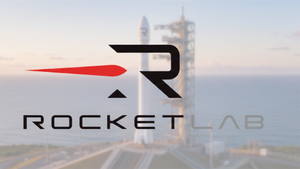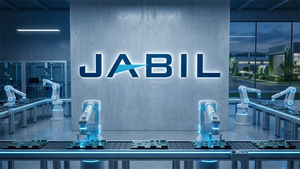
Packaged foods company Kraft Heinz (NASDAQ: KHC) met Wall Streets revenue expectations in Q3 CY2025, but sales fell by 2.3% year on year to $6.24 billion. Its non-GAAP profit of $0.61 per share was 5.5% above analysts’ consensus estimates.
Is now the time to buy KHC? Find out in our full research report (it’s free for active Edge members).
Kraft Heinz (KHC) Q3 CY2025 Highlights:
- Revenue: $6.24 billion vs analyst estimates of $6.26 billion (2.3% year-on-year decline, in line)
- Adjusted EPS: $0.61 vs analyst estimates of $0.58 (5.5% beat)
- Adjusted EBITDA: $1.36 billion vs analyst estimates of $1.37 billion (21.8% margin, 1.3% miss)
- Management lowered its full-year Adjusted EPS guidance to $2.54 at the midpoint, a 2.1% decrease
- Operating Margin: 16.4%, up from -1.6% in the same quarter last year
- Organic Revenue fell 2.5% year on year vs analyst estimates of 2.2% declines (29.3 basis point miss)
- Sales Volumes fell 3.5% year on year, in line with the same quarter last year
- Market Capitalization: $28.86 billion
StockStory’s Take
Kraft Heinz’s third quarter was marked by ongoing challenges as the company faced falling sales volumes and persistent weakness in consumer sentiment. Management attributed these trends to cautious spending across key markets and highlighted that promotional investments and product renovations have not yet delivered a volume rebound. CEO Carlos Abrams-Rivera acknowledged the difficulties, stating, “the operating environment remains challenging with worsening consumer sentiment and ongoing inflation influencing buying behavior around the world.” The negative market reaction reflected concerns about continued softness in demand and the effectiveness of recent initiatives to stabilize performance.
Looking ahead, Kraft Heinz’s updated guidance is shaped by expectations of prolonged consumer caution and slow category recovery, particularly in core segments like meat and coffee. Management lowered profit forecasts, citing both external macroeconomic headwinds and internal supply chain disruptions. CFO Andre Maciel emphasized, “the profit revision is a function of lower expectation on consumption in the U.S.,” and highlighted that additional marketing investments are not expected to drive near-term volume recovery. The company’s focus remains on brand investment and operational discipline as it prepares for its planned separation into two independent businesses.
Key Insights from Management’s Remarks
Management cited ongoing consumer weakness, uneven category recovery, and supply chain disruptions as the main factors influencing recent performance and strategic priorities.
- Consumer sentiment remains fragile: Management cited historically low consumer confidence in the U.S. and Indonesia, which continued to weigh on volumes and delayed category recoveries. CEO Carlos Abrams-Rivera described the current environment as “one of the worst consumer sentiments we have seen in decades.”
- Promotional activity and limited ROI: Kraft Heinz increased U.S. promotional and marketing spending by approximately $300 million, but CFO Andre Maciel noted that return on these investments has been “low,” particularly outside of peak periods like back-to-school and holidays.
- Emerging markets uneven: While key brands like Heinz grew 13% year-to-date in emerging markets excluding Indonesia, performance in Indonesia declined sharply due to consumer sentiment and distributor challenges. Management is transitioning to a new distributor and rightsizing inventory to address these issues.
- Product renovation as a lever: The company emphasized ongoing product renovation and cross-brand promotional events, such as those during back-to-school, as critical to driving household penetration. Renovated products like Lunchables and Capri Sun were cited as bright spots.
- Preparation for business separation: Management is progressing toward splitting Kraft Heinz into two independent companies by the second half of 2026. The focus is on ensuring both new entities have the right management structures, operational models, and investment-grade balance sheets.
Drivers of Future Performance
Kraft Heinz expects persistent consumer caution, uneven category trends, and operational adjustments to shape its performance in the coming quarters.
- Category volatility and demand risk: Management flagged that recovery in core segments such as meat, coffee, and cheese will be slow, with continued headwinds from weak consumer sentiment and inventory adjustments by retail partners. These trends are expected to limit volume growth and put pressure on near-term revenues.
- Operational execution and cost discipline: The company plans to maintain disciplined marketing and R&D investments, but does not foresee incremental spend delivering a quick turnaround. CFO Andre Maciel stated that “the profit revision is not linked to incremental investments beyond what we had previously communicated,” emphasizing a focus on efficiency and selective investment.
- Separation into two companies: The planned split into Global Taste Elevation and North American Grocery businesses remains a strategic priority. Management is focused on setting up each entity for stable cash flow, operational focus, and the ability to respond to distinct category and geographic challenges.
Catalysts in Upcoming Quarters
In the coming quarters, the StockStory team will track (1) progress on volume stabilization and category recovery in challenged segments such as meat, coffee, and Indonesia, (2) signs of improved return on promotional and marketing investments, and (3) updates on the planned business separation, including formal management appointments and capital structure decisions. Additionally, operational adjustments in supply chain and inventory management will be key indicators of the company’s ability to regain momentum.
Kraft Heinz currently trades at $24.38, down from $25.54 just before the earnings. At this price, is it a buy or sell? See for yourself in our full research report (it’s free for active Edge members).
Our Favorite Stocks Right Now
Donald Trump’s April 2025 "Liberation Day" tariffs sent markets into a tailspin, but stocks have since rebounded strongly, proving that knee-jerk reactions often create the best buying opportunities.
The smart money is already positioning for the next leg up. Don’t miss out on the recovery - check out our Top 6 Stocks for this week. This is a curated list of our High Quality stocks that have generated a market-beating return of 183% over the last five years (as of March 31st 2025).
Stocks that made our list in 2020 include now familiar names such as Nvidia (+1,545% between March 2020 and March 2025) as well as under-the-radar businesses like the once-small-cap company Exlservice (+354% five-year return). Find your next big winner with StockStory today.
StockStory is growing and hiring equity analyst and marketing roles. Are you a 0 to 1 builder passionate about the markets and AI? See the open roles here.





